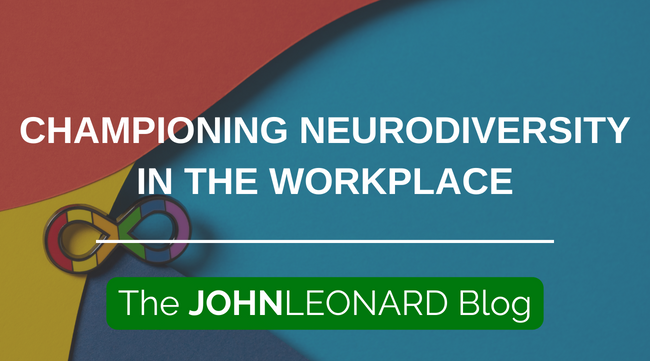According to recent studies, 15-20% of the population worldwide is neurodivergent, which means “they think, perceive things, and act in ways that can diverge significantly from what is considered ‘normal’ or neurotypical.” Some neurodivergent conditions can include autism, dyslexia, and obsessive-compulsive disorder (OCD). Neurodivergent employees can have unique strengths, such as heightened attention to detail, exceptional problem-solving skills, and innovative thinking, which can bring a fresh perspective and make an organization thrive. However, they can also often face significant challenges and barriers when their employers and colleagues do not support them. Building a culture of inclusion and support can help eliminate barriers for neurodivergent employees, empower all of your employees, and help your organization succeed.
Embracing and supporting neurodiversity in the workplace drives employee engagement, improves collaboration, work processes, and retention, and narrows the skills and talent gap. This not only fosters a more inclusive and diverse work environment but also enhances the organization’s overall success.
- Diversity, equity, inclusion (DEI), and mission/value alignment are non-negotiables for most employees. When employers embrace neurodiversity, employees feel a higher sense of belonging and find their work more meaningful, boosting engagement levels and improving retention. Several companies with the most extensive neurodiversity programs have seen an employee retention rate of over 90%.
- Deloitte recently reported that teams with neurodivergent employees are 30% more productive than teams without because problems are approached and solved differently. Neurodiverse teams bring together unique strengths and skill sets, which enhances innovation, efficiency, and output.
- While many companies are struggling to hire, neurodivergent individuals are often underemployed or unemployed. In fact, “unemployment runs as high as 80 percent for neurodivergent people.” Adopting a more inclusive hiring process can open the door to untapped talent and close the skills gap. Many people with neurodivergent conditions can excel in analytics, creativity, pattern recognition, and information processing.
Neurodiversity refers to how cognitive functions differ from person to person and can present varying challenges. Some neurodiverse conditions can cause individuals to become overstimulated, disorganized, or have trouble managing their workload, which can ultimately lead to bias and discrimination in the workplace. There are several ways organizations can transform their workplace into a supportive and safe environment for neurodivergent employees to thrive.
- Create a culture of openness, trust, and psychological safety: Institute training and education for leadership on how to effectively manage neurodivergent employees, create employee resource groups, and work with employees to adopt inclusive language and dismantle stigmas and stereotypes. Learning how to identify and eliminate harmful language will go a long way in creating safe workplaces where employees can thrive without having to mask part of their identity.
- Review and revise hiring practices to attract and retain neurodiverse talent: Adopt a skills and strengths-based approach when sourcing, screening, and interviewing candidates and consider transferable skills and non-traditional experiences. Reconsider the importance of making eye contact and having a solid handshake. Some neurodiverse conditions can make performing those actions difficult and uncomfortable.
- Make reasonable and appropriate accommodations in the workplace: Most accommodations for neurodivergent employees have little to no financial impact. 59% of those accommodations actually cost nothing, according to a recent survey conducted by the U.S. Job Accommodation Network. Some accommodations include:
- Extra time for breaks
- Flexible work hours and opportunities to work from home
- Clearly outlined job tasks, goals, and processes
- Dedicated workspaces and ways to reduce overstimulation and distraction
- Access to assisted technology
- Enhance communication styles and processes: Every brain functions differently, so not one communication style works for everyone. Employers and employees can support their neurodivergent colleagues by providing flexibility in communication styles and processes. For example:
- Offering multiple forms of communication, like email, in-person, and chat
- Using visual aids in meetings
- Providing a calendar for progress and deadline expectations
- Scheduled and consistent check-ins
Creating a culture of inclusion can help remove barriers and empower neurodivergent employees. This can positively impact the workplace as a whole and ultimately lead to greater success for the organization. Organizations can achieve this by implementing training and education programs, revising their hiring processes, making accommodations, and improving communication. Championing neurodiversity is a win-win!
For more advice on how your organization can build an inclusive culture, subscribe to The JOHNLEONARD Blog!


